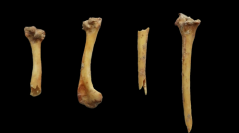

 Anthropozoologica
56 (16) - Pages 241-251
Anthropozoologica
56 (16) - Pages 241-251Among the faunal remains brought to light in the recent Iron Age excavations at the site of Arslantepe (South-East Turkey), the discovery of the bones belonging to an adult rooster is of particular interest. The red junglefowl, Gallus gallus (Linnaeus, 1758), is not autochthonous of Anatolia; the species is native to and was originally domesticated in south-eastern Asia, reaching the Mesopotamian region only at the beginning of the 3rd millennium BC. Throughout the Bronze Age and up to the beginning of the Iron Age the evidence of domestic junglefowl remains sporadic. However, from the second half of the 2nd millennium BC onwards, findings became more consistent, allowing us to trace its spread and evolution. The discovery of the first rooster at Arslantepe, in a level dated to the very beginning of the 1st millennium BC, fits with the general development of this species into the Near East and from here, during the advanced Iron Age, to the Mediterranean and to the West. The article aims at integrating this discovery into its geographical, cultural, chronological, and zoological background. Moreover, the discussion is broadened within the complex scenario of the development of the Iron Age Syro-Anatolian societies. We argue that the scarcity of chicken remains until the beginning of the 1st millennium BC might not be only related to taphonomic conditions but also to the fact that the species was an exotic rarity with possibly some sort of symbolic relevance.
Hittite, Near East, domestic chicken